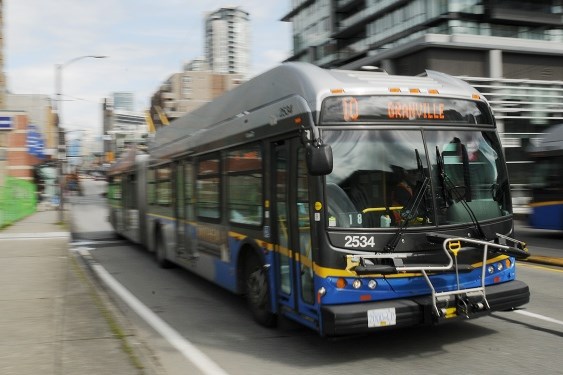Last year I became an all-weather cyclist. I’d started a new job in Burnaby, and Google Maps told me the commute would be 32 minutes whether I take transit or cycle. I love the ride and get an hour of cardio every day.
Further sweetening the deal, my employer offers a $120 enviro bonus to cyclists. Fitness and finance aside, I also prefer my two-wheeled commute because taking transit as a woman in Vancouver can be an even rougher ride.
When I began commuting by bike, my brother who started riding as a kid, before there were bike lanes or cyclist-controlled traffic lights, gave me tips.
He practises a type of survivalist cycling which includes a willingness to ride on sidewalks and assuming that cars cannot see or care about a biker.
His lecture could have been told around a campfire. His eyes wide and gestures grand with conviction, he described the perils I’d be exposed to and how I needed to be “street smart” on my ride.
When I smiled at his concern, his eyes widened further and his forehead reddened. “Promise me you won’t be stupid. Don’t make left turns at busy intersections,” he demanded.
So I designed a route that includes only one left turn. Every day, I scan the intersection carefully and look for trouble. Peril averted, I enter the Central Valley Greenway, relax into my ride and hope for a sighting of the lone pair of ravens that live just beyond Victoria Drive.
There are perils on transit too, ones I’m glad to avoid by cycling. In summer when I step onto the bus at Broadway and Commercial, my bare arms are a liability.
“Ooh Mommie, why don’t you come sit beside me?” a man recently sneered before he smirked at his friends across the aisle. It’s a small instance I can shake off, but it’s one of many since the hot weather hit.
Years ago, I worked for a woman who promised me that when a woman gets to 40, she becomes invisible to harassers. My boss had entered her fifth decade and her relief made quite an impression on me. Now almost 40 myself, I expected aging to mitigate the amount of harassment I face, but I’m surprised to find I experience more harassment now than at any time in my 25 years in this city.
I also witness other women on transit getting unwanted, malicious attention. Each time, I weigh the potential risks of intervening. Most often I step in, which is exhausting and potentially dangerous, but so is the frozen prey vigilance if I choose to be silent and hope to be passed over.
Early this year, Vancouver Transit Police confirmed sexual harassment rates are on the rise and offered new tools to help make reporting easier.
Transit riders can now text 877-777 to report an incident, or download an app called On Duty, which allows for quick reporting as well as a map of recent crime activity.
Transit Police also launched an unfortunate campaign this past July. Banners placed on trains and buses told riders “not reporting sexual assault is the real shame.” It certainly isn’t the target’s fault if an aggressor gets away with assault or harassment.
We all have a part to play in confronting disrespectful behaviour, and Transit Police should focus their education campaign on giving riders strategies for dealing with harassment in progress as well as ways to report it.
HollaBack Vancouver is part of an international movement that aims to end street harassment and offers concrete ideas about what to do when it happens on transit.
With a menu of tactics that includes directly addressing the aggressor and telling him to stop, to finding a delegate with authority or simply interrupting for directions, anyone can feel prepared to help diffuse harassment in progress and make transit safer for everyone.
I’ve downloaded the transit police’s app, added the text number to my phone, and I’ve read Hollaback’s tips on challenging harassment.
When the heavy rains hit and I get back on the bus, I will continue to stand up and intervene when others are targeted, and ask my fellow riders to do the same. Until then, I’ll accept the risks of making that one left turn a day.
trishkellyc@gmail.com
twitter.com/trishkellyc



